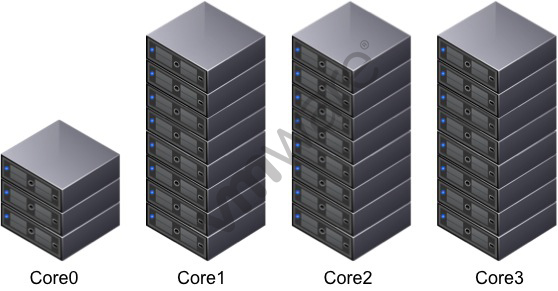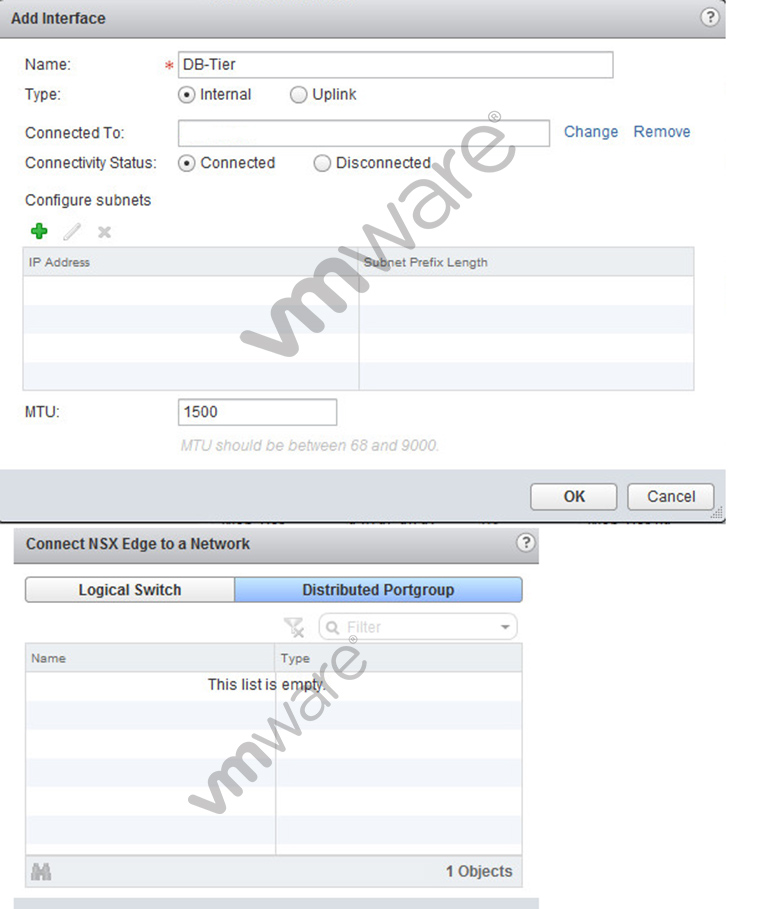VMware Certified Professional 6 - Network Virtualization v6.0
Question 1
You have deployed a two-tiered application using four virtual machines:
Two virtual machines are web application servers
Two virtual machines providing a clustered database service
What feature can you configure to provide the most accurate account for only the traffic between the web servers and the clustered database?
- A. On the vSphere Distributed Switch, configure the use of a port mirroring session using the Encapsulated Remote Mirroring (L3) Source session type.
- B. On the vSphere Distributed Switch, configure the use of a port mirroring session using the Remote Mirroring Destination session type.
- C. On the vSphere Distributed Switch, configure the use of an Isolated Private VLAN for the ports of the four virtual machines.
- D. On the vSphere Distributed Switch, configure Netflow for the distributed virtual port group and enable Process internal flows only for the distributed switch.
Answer : D
Question 2
Which statement is true regarding an NSX Edge gateway device configured with a DNS
Server?
- A. The NSX Edge will forward all DNS requests from virtual machines sent to it to the DNS Server.
- B. The NSX Edge configuration will override the DNS Server configured by the NSX Manager.
- C. The NSX Edge registers the DNS Server with the NSX Controller.
- D. The NSX Edge periodically synchronizes its DNS tables with the primary DNS Server.
Answer : A
Question 3
An NSX Edge Service Gateway has two interfaces:
Internal interface named Internal Access
-- IP address = 10.10.10.1
-- Network mask = 255.255.255.0
Uplink interface named Physical Uplink
-- IP address = 20.20.20.1
-- Network mask = 255.255.255.0
A vSphere administrator wants to add a SNAT rule to allow traffic from the internal network segment to access external resources via the uplink interface.
Which three steps should the vSphere administrator do to add the SNAT rule? (Choose three.)
- A. Apply the SNAT rule to the Internal Access interface.
- B. Select 10.10.10.1 as the translated source IP.
- C. Apply the SNAT rule on the Physical Uplink interface.
- D. Select 10.10.10.0/24 as the original subnet.
- E. Choose 20.20.20.2 as the translated source IP address.
Answer : C,D,E
Question 4
Which is not a valid Destination option for a General Logical Firewall rule?
- A. Datacenter
- B. Virtual App
- C. MAC Set
- D. Network
Answer : C
Question 5
-- Exhibit --

-- Exhibit --
Your data center clusters are configured as shown in the exhibit.
Core0 uses Virtual SAN and hosts virtual machines running the following components:
vCenter Server
Single Sign-On Server
Update Manager
SQL Server database
Core1, Core2, and Core3 use a single Fibre Channel attached storage array. Core1 hosts over 500 virtual machines. Core2 hosts over 400 virtual machines. Core3 hosts 100 virtual machines.
Following VMware's best practices, NSX Controller components should be deployed to which location(s)?
- A. Deploy three NSX Controllers, one on each host of Core0.
- B. Deploy four NSX controllers, one on each cluster in the data center.
- C. Deploy 27 NSX controllers, one for each host in the data center
- D. Deploy three NSX controllers. Deploy one in Core1, one in Core2, and one in Core3.
Answer : A
Question 6
Which tool is used to display VXLAN connection information?
- A. pktcap-uw
- B. NSX Controller CLI
- C. esxtop
- D. VDS Health Check
Answer : B
Question 7
Which two statements are valid regarding vCloud Networking and Security (vCNS) and
NSX? (Choose two.)
- A. Both vCNS and NSX support multiple hypervisor environments.
- B. NSX provides support for multiple hypervisor environments, vCNS does not.
- C. Both vCNS and NSX support dynamic routing protocols.
- D. NSX supports dynamic routing protocols, vCNS does not.
Answer : BD
Question 8
An administrator enables the NSX Ticket Logger to track infrastructure changes. The administrator logs out for lunch, returns and logs back in to complete the task. What is the status of ticket logger when the administrator logs back in?
- A. The ticket logger still tracks changes until it is turned off by the administrator.
- B. The ticket logger is turned off.
- C. The ticket logger will prompt the user if they still want to continue tracking changes.
- D. The ticket logger will display an error.
Answer : B
Question 9
What are two advantages for using NSX for vSphere's Logical Switching? (Choose two.)
- A. Expands the number of available VLANs.
- B. Allows for Layer 2 switching over Layer 3 infrastructure.
- C. Distributes Layer 3 data across multiple hypervisors
- D. Provides for 10,000 logical segments.
Answer : BD
Question 10
Which NSX feature provides the ability to audit network traffic, define and refine firewall polices, and identify threats to the network?
- A. ERSPAN
- B. Flow Monitoring
- C. Logical Routers
- D. Service Composer
Answer : B
Question 11
Which two are valid statements regarding third-party services and NSX? (Choose two.)
- A. Third party services are automatically registered with NSX Manager.
- B. Third party services can either be automatically or manually registered with NSX Manager.
- C. Third party services require the deployment of a virtual appliance.
- D. Third party services may or may not utilize a service virtual appliance.
Answer : BD
Question 12
Which two options are pieces of information required to perform an NSX backup? (Choose two.)
- A. Transfer protocol
- B. Default Port
- C. Number of backups retained
- D. Filename prefix
Answer : A,D
Question 13
Which three network policy settings can only be configured on a vSphere 5.5 Distributed
Switch? (Choose three.)
- A. Access Control Lists (ACLs)
- B. Network I/O Control
- C. LACP v2
- D. NetFlow
- E. DSCP Marking
Answer : ACE
Question 14
High Availability (HA) was not initially configured when an administrator deployed an NSX
Edge Service Gateway. What should the administrator do to configure the NSX Edge with
HA?
- A. Select the NSX Edge instance from the NSX Edges view in Networking & Security. Go to Manage> Settings> Configuration and add a NSX Edge appliance.
- B. Delete the NSX Edge instance and redeploy it with HA. The existing NSX Edge configuration data will be lost.
- C. Delete the NSX Edge instance and redeploy it with HA. The configuration data is retained by NSX Manager and pushed to the new NSX Edge instance.
- D. Select the NSX Edge appliance from the Virtual Machines and Templates view. Go to Actions> All vCenter Actions> Enable HA to configure High Availability.
Answer : A
Question 15
-- Exhibit --

-- Exhibit --
An administrator is deploying a distributed router and is adding an interface for a logical switch, as shown in the following exhibit.
The administrator clicks on the Change link to specify the network to connect to. Selecting the distributed portgroup, the administrator finds that no portgroups are listed. The administrator verifies the desired portgroup exists in vCenter Server.
What condition would result in this behavior?
- A. The MTU size is set to 1500.
- B. A subnet has not been configured.
- C. The interface name has an invalid character.
- D. The interface type is incorrect.
Answer : D